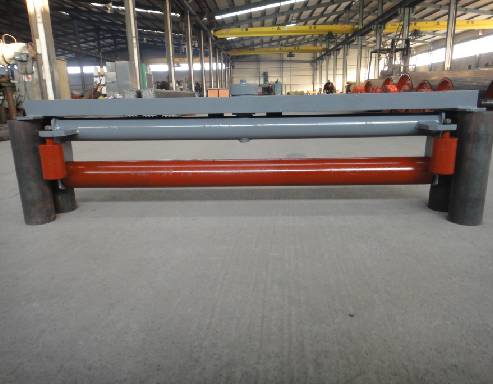 Afrikaans
Afrikaans  Albanian
Albanian  Amharic
Amharic  Arabic
Arabic  Armenian
Armenian  Azerbaijani
Azerbaijani  Basque
Basque  Belarusian
Belarusian  Bengali
Bengali  Bosnian
Bosnian  Bulgarian
Bulgarian  Catalan
Catalan  Cebuano
Cebuano  Corsican
Corsican  Croatian
Croatian  Czech
Czech  Danish
Danish  Dutch
Dutch  English
English  Esperanto
Esperanto  Estonian
Estonian  Finnish
Finnish  French
French  Frisian
Frisian  Galician
Galician  Georgian
Georgian  German
German  Greek
Greek  Gujarati
Gujarati  Haitian Creole
Haitian Creole  hausa
hausa  hawaiian
hawaiian  Hebrew
Hebrew  Hindi
Hindi  Miao
Miao  Hungarian
Hungarian  Icelandic
Icelandic  igbo
igbo  Indonesian
Indonesian  irish
irish  Italian
Italian  Japanese
Japanese  Javanese
Javanese  Kannada
Kannada  kazakh
kazakh  Khmer
Khmer  Rwandese
Rwandese  Korean
Korean  Kurdish
Kurdish  Kyrgyz
Kyrgyz  Lao
Lao  Latin
Latin  Latvian
Latvian  Lithuanian
Lithuanian  Luxembourgish
Luxembourgish  Macedonian
Macedonian  Malgashi
Malgashi  Malay
Malay  Malayalam
Malayalam  Maltese
Maltese  Maori
Maori  Marathi
Marathi  Mongolian
Mongolian  Myanmar
Myanmar  Nepali
Nepali  Norwegian
Norwegian  Norwegian
Norwegian  Occitan
Occitan  Pashto
Pashto  Persian
Persian  Polish
Polish  Portuguese
Portuguese  Punjabi
Punjabi  Romanian
Romanian  Russian
Russian  Samoan
Samoan  Scottish Gaelic
Scottish Gaelic  Serbian
Serbian  Sesotho
Sesotho  Shona
Shona  Sindhi
Sindhi  Sinhala
Sinhala  Slovak
Slovak  Slovenian
Slovenian  Somali
Somali  Spanish
Spanish  Sundanese
Sundanese  Swahili
Swahili  Swedish
Swedish  Tagalog
Tagalog  Tajik
Tajik  Tamil
Tamil  Tatar
Tatar  Telugu
Telugu  Thai
Thai  Turkish
Turkish  Turkmen
Turkmen  Ukrainian
Ukrainian  Urdu
Urdu  Uighur
Uighur  Uzbek
Uzbek  Vietnamese
Vietnamese  Welsh
Welsh  Bantu
Bantu  Yiddish
Yiddish  Yoruba
Yoruba  Zulu
Zulu drive rollers for conveyors
Drive Rollers for Conveyors Essential Components for Efficient Material Handling
In the realm of material handling systems, conveyor systems stand out as one of the most efficient and versatile methods for transporting goods from one point to another. At the heart of these systems lie components known as drive rollers, which play a pivotal role in the smooth and reliable operation of conveyors. This article delves into the significance of drive rollers for conveyors, their functionality, types, and considerations for selecting the right roller for specific applications.
Understanding Drive Rollers
Drive rollers are typically installed at the drive end of a conveyor system and are responsible for imparting motion to the conveyor belt. When powered, these rollers turn and, through friction, facilitate the movement of the belt along the conveyor’s length. This mechanism allows for the seamless transportation of various materials, whether they are lightweight boxes or heavy pallets. The efficiency of the entire conveyor system can significantly depend on the quality and design of these rollers.
Functionality of Drive Rollers
The primary function of drive rollers is to convert power from a motor into rotational energy that moves the conveyor belt. The rollers typically feature a cylindrical design and have a surface that enhances traction with the conveyor belt to prevent slippage. In addition, they often contain internal components such as bearings and motor systems, which ensure smooth operation and reduce wear and tear over time.
Drive rollers are designed to withstand varying loads and speeds, and they play a crucial role in how effectively materials are transferred throughout a facility. Whether the application involves sorting, packaging, or assembly, proper functionality of drive rollers ensures that materials are moved efficiently and without interruption.
Types of Drive Rollers
There are various types of drive rollers available, each tailored for specific applications and environments. Some common types include
1. Electric Drive Rollers These are powered by electric motors and are widely used due to their efficiency and the ease of integrating them into existing systems.
drive rollers for conveyors

3. Spring-Loaded Rollers Designed to automatically adjust to the tension of the conveyor belt, these rollers help maintain optimal contact and performance.
4. Rollers with Different Surface Finishes Depending on the material being transported, rollers may have various surface finishes (e.g., rubber-coated, metal, or plastic) to enhance grip and minimize wear on the belt.
Considerations for Selection
When selecting drive rollers for a conveyor system, several factors need to be considered
- Load Capacity It is vital to choose rollers that can withstand the maximum anticipated load. This ensures durability and prevents premature failure of the conveyor system.
- Speed Requirements Different applications may require different belt speeds. Selecting rollers that can accommodate the necessary speed is critical for efficient operations.
- Environmental Conditions The environment in which the conveyor operates can influence roller selection. Factors such as temperature, moisture, and potential exposure to chemicals should all be considered.
- Maintenance Needs Some rollers require more maintenance than others. It's essential to consider the ease of maintenance and the availability of replacement parts.
Conclusion
Drive rollers are indispensable components of conveyor systems, playing a crucial role in ensuring efficient material handling in various industries. By understanding their functionality, types, and the considerations involved in their selection, businesses can enhance the performance and lifespan of their conveyor systems. Properly chosen and maintained drive rollers contribute significantly to the overall efficiency of operations, ultimately driving productivity and profitability in material handling processes.
-
Revolutionizing Conveyor Reliability with Advanced Rubber Lagging PulleysNewsJul.22,2025
-
Powering Precision and Durability with Expert Manufacturers of Conveyor ComponentsNewsJul.22,2025
-
Optimizing Conveyor Systems with Advanced Conveyor AccessoriesNewsJul.22,2025
-
Maximize Conveyor Efficiency with Quality Conveyor Idler PulleysNewsJul.22,2025
-
Future-Proof Your Conveyor System with High-Performance Polyurethane RollerNewsJul.22,2025
-
Driving Efficiency Forward with Quality Idlers and RollersNewsJul.22,2025





























